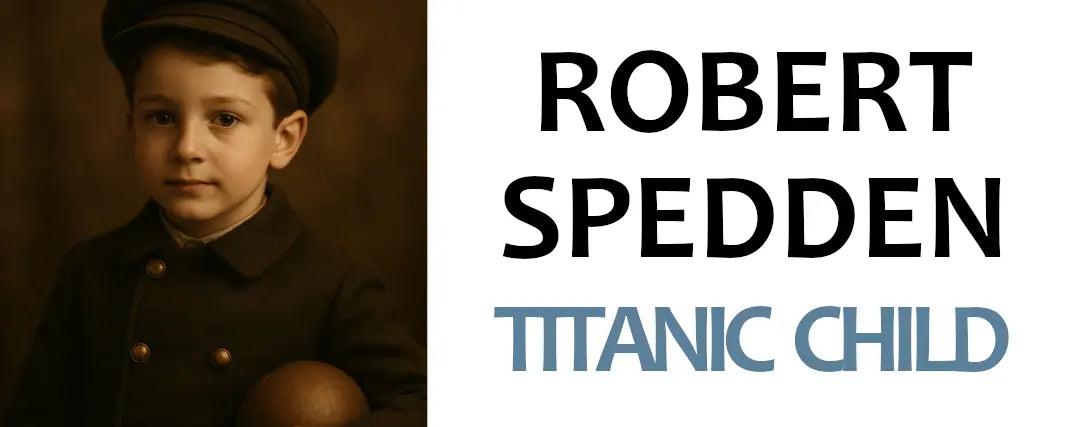Table of Contents
- 🎬 Introduction - Who is Ruth DeWitt Bukater?
- 🛳️ Did Ruth survive the Titanic sinking?
- 📜 What happened to Ruth after Titanic?
- 👩👧 Did Ruth ever see Rose again?
- 💬 Why didn’t Ruth like Molly Brown?
- 🪞 Ruth’s Role in Rose’s Character Development
- 🧠 Ruth and the Social Pressure of 1912
- 💎 Ruth and the Story Behind the Heart of the Ocean
- 🎥 How Old Was Ruth in Titanic? Who Played Her?
- 🔍 Ruth in Titanic Wikipedia vs. Reality
- 📚 Was Ruth DeWitt Bukater a Real Person?
- ❓ FAQ About Ruth in Titanic
- 🧭 Conclusion - Ruth DeWitt Bukater’s Symbolic Legacy
🎬 Introduction – Who is Ruth DeWitt Bukater?
In Titanic, we remember the love story between Rose and Jack, the tragedy of the sinking, and the iconic blue diamond known as the Heart of the Ocean necklace. But one key character often goes unnoticed: Ruth DeWitt Bukater, Rose’s mother.
Elegant, strict, and deeply tied to the values of her social class, Ruth is much more than a supporting role. She embodies the weight of appearances, the urgency of status, and the fear of financial downfall in a society where a woman’s future depended almost entirely on marriage.

While she may seem cold or manipulative, Ruth is in fact a complex and tragic figure. She is a mother driven by pride, fear, and duty – trying to protect her daughter the only way she knows how, even if it means sacrificing love for security.
Who was Ruth in Titanic, really? Did Ruth survive the Titanic? Did she ever see Rose again? And why does this character continue to raise questions decades after the film’s release?
In this article, we’ll explore her personality, her symbolic role, and her mysterious fate – diving into fan theories, screenplay insights, and emotional contrasts to uncover the real story behind one of the most misunderstood women in the Titanic universe.
🛳️ Did Ruth survive the Titanic sinking?
One of the most frequently asked questions about the film is: Did Ruth DeWitt Bukater survive the Titanic? The answer is yes. In James Cameron’s Titanic, Ruth is seen boarding one of the lifeboats reserved for women and children, along with other first-class passengers including Molly Brown. She survives the disaster physically but emotionally, her world is collapsing.

Throughout the evacuation scene, Ruth maintains a cold and composed attitude. She doesn’t panic, she doesn’t cry. Her gaze remains fixed, her voice steady. This behavior reflects her deep attachment to status, control, and appearances - even in the face of chaos and death. She is determined to keep her dignity, no matter the cost.
But although Ruth survives the sinking, the film never reveals what happens to her afterwards. She disappears from the narrative, leaving viewers with more questions than answers. Did she return to America alone? Did she ever try to find her daughter? Or did she consider Rose lost, both literally and symbolically?
This silence is powerful. It turns Ruth into a kind of ghost of the past, a reminder of the world Rose chose to leave behind. The fact that her fate is left unresolved is not accidental. It reinforces the emotional rupture between mother and daughter, and invites us to reflect on what survival really means.
📜 What happened to Ruth after Titanic?
This is one of the great unresolved questions of the film. What happened to Ruth DeWitt Bukater after the Titanic sank? James Cameron never shows her again after she boards the lifeboat. The audience is left with no closure, only a single line from Rose in the present: "I never spoke to my mother again after that night."
This powerful statement implies a total break between mother and daughter. For Rose, surviving the Titanic meant reclaiming her freedom. She changes her name to Rose Dawson and starts a new life, cutting ties with her past. Ruth, meanwhile, fades into silence. The film offers no confirmation of her fate, only speculation.
Some extended versions of the script suggest that Ruth returned to Philadelphia, alone and disgraced. Other fan theories imagine her trying to maintain appearances despite losing her daughter, her influence, and perhaps even her wealth. Without her husband, and now without Rose, Ruth may have become a shadow of the proud woman we saw on board.

In that sense, Ruth’s disappearance is symbolic. She represents the dying world of aristocratic rules, of arranged marriages, of status over love. Titanic was not just a shipwreck, it was a rupture between two generations, two ways of living. Ruth stood for the past. Rose moved on to the future.
👩👧 Did Ruth ever see Rose again?
According to the film, Ruth and Rose never saw each other again after the Titanic tragedy. This is confirmed by a short but striking line from Rose as an elderly woman: "I never spoke to my mother again after that night." It's one of the most emotionally charged moments of the story, revealing the depth of their separation.
This silence was not just physical. It was also emotional and ideological. Rose's decision to leave behind her privileged identity and take on a new life as Rose Dawson was a direct rejection of everything her mother represented - control, appearances, social status.
For Ruth, who had spent her entire life trying to protect her family’s name, Rose’s escape may have felt like betrayal. For Rose, it was survival. The sinking of the Titanic gave her the chance to start over. But it came at the price of losing her mother forever.

We never learn if Ruth tried to find Rose. Did she search? Did she grieve? Or did she assume her daughter had died in the wreck? The film leaves it open - and that's what gives this mother-daughter relationship its haunting power. It reminds us that some emotional separations are deeper than death.
➡️If the story of Ruth and Rose moved you, explore our collection of Titanic-inspired jewelry - because some emotions deserve to shine forever.
💬 Why didn’t Ruth like Molly Brown?
In Titanic, the tension between Ruth DeWitt Bukater and Molly Brown is obvious from their very first exchange. Although both women travel in first class, Ruth treats Molly with visible disdain. But why?
The answer lies in their backgrounds. Molly Brown, often referred to as “new money,” earned her wealth through hard work and good fortune. She is open, loud, and unafraid to speak her mind. Ruth, by contrast, comes from a family of old aristocratic roots - one that had recently lost its fortune but not its pride.
For Ruth, Molly represents everything that threatens her world: social mobility, authenticity, and lack of refinement. Even though Molly is kind and generous, Ruth sees her as vulgar, unsophisticated, and intrusive. During the famous dinner scene, she barely hides her discomfort when Molly offers Rose advice and encouragement.

This conflict is more than personal - it reflects a deeper clash between two Americas. Ruth clings to a crumbling elite, while Molly embodies a rising class where personality and resilience matter more than lineage. Their tension highlights one of the film’s most powerful themes: the fall of the old world and the rise of the new.
🪞 Ruth’s Role in Rose’s Character Development
Ruth DeWitt Bukater is essential to Rose’s transformation in Titanic. While Jack helps Rose discover freedom, Ruth defines what she’s trying to escape. Their relationship is built on pressure, duty, and emotional control - all the ingredients of a woman trapped by society’s expectations.
Ruth is not simply a villain. She is a symbol of the world Rose is born into - a world ruled by appearances, arranged marriages, and financial survival. Her constant insistence that Rose must marry Cal is not just about ambition. It’s about desperation. Ruth knows that without a wealthy husband, they will lose everything.
This conflict shapes Rose’s inner struggle. She is torn between loyalty to her mother and her own desire for freedom. The more Ruth pushes, the more Rose begins to question what kind of life she wants. When she finally breaks free, it’s not just from a sinking ship - it’s from generations of silent submission.

In that sense, Ruth is not just Rose’s mother. She is the force that sets Rose’s rebellion in motion. Without Ruth, there would be no Rose Dawson - only another woman lost in corsets, tea parties, and social contracts. Their painful dynamic is what gives the film its emotional depth.
🧠 Ruth and the Social Pressure of 1912
To truly understand Ruth DeWitt Bukater, we must place her in the context of her time. In 1912, a woman’s status depended almost entirely on her family name and her marriage. There were few legal rights, no real financial independence, and very limited options for those who fell from social grace.
Ruth is a product of that world. Her husband’s death left her with debts and no income. Her only remaining asset is Rose and the possibility of marrying her off to a wealthy heir like Cal Hockley. Ruth’s decisions may seem harsh, but in her mind, they are a matter of survival.
Every word she speaks is driven by fear, fear of poverty, fear of shame, and fear of becoming invisible. Her obsession with manners, image, and connections is not just vanity. It’s her last defense against a world that gives her no second chances.

In this light, Ruth is not just controlling, she is desperate. She has internalized the very system that oppresses her and now passes that pressure onto her daughter. That makes her both a victim and a vessel of a fading patriarchal order. Titanic doesn’t just show the end of an era at sea. It also shows the slow collapse of women like Ruth, who were taught to survive through silence and sacrifice.
💎 Ruth and the Story Behind the Heart of the Ocean
While Ruth never physically touches the famous blue diamond, her influence is what puts the Heart of the Ocean around Rose’s neck. The jewel, gifted by Cal Hockley, is more than a luxurious accessory. It is a symbol of the life Ruth wants her daughter to accept a life of wealth, security, and social status.
The Heart of the Ocean represents a transaction, not affection. It seals the engagement between Cal and Rose, a deal orchestrated under Ruth’s watchful eye. To Ruth, this engagement is the solution to all problems. To Rose, it feels like a trap.
By encouraging (and pressuring) Rose to accept Cal, Ruth indirectly becomes the architect of the emotional prison that the necklace symbolizes. It’s not just a jewel, it’s a cage disguised as a gift. Every time the necklace appears on screen, it evokes Ruth’s presence, even when she’s absent.
In the end, when Rose drops the diamond into the ocean, it’s not just about Jack. It’s about rejecting everything Ruth stood for control, duty, appearance over love. The jewel may be Cal’s gift, but it’s Ruth’s legacy that Rose throws into the sea.
🎥 How Old Was Ruth in Titanic? Who Played Her?
Many fans wonder about Ruth DeWitt Bukater's age in Titanic. While the film doesn’t mention it directly, clues in the screenplay and historical context suggest that Ruth was around 45 to 50 years old in April 1912, during the voyage of the Titanic. This age makes sense, considering Rose is 17 and Ruth refers to her late husband’s recent death and financial issues.

The role of Ruth was played by Frances Fisher, a talented American actress who was exactly 45 at the time of filming in 1996. Her performance was praised for its nuance, balancing coldness and vulnerability in a character often judged too harshly.
Frances Fisher brought depth to a woman who could have been portrayed as one-dimensional. She captured Ruth’s inner fear, pride, and the tragic elegance of someone watching her world collapse. Thanks to her performance, Ruth became one of the most memorable “secondary” characters in Titanic, a symbol of the old world, standing in contrast to Rose’s awakening.
For those curious about the actress, Frances Fisher has appeared in numerous other films and series, including Unforgiven, The Lincoln Lawyer, Watchmen, and Resurrection. But to many, she will always be remembered as Ruth, Rose’s mother in Titanic.
🔍 Ruth in Titanic Wikipedia vs. Reality
If you search for “Ruth Titanic Wikipedia”, you’ll find pages describing her as a fictional character created by James Cameron. That’s true. Ruth DeWitt Bukater is not a historical figure and did not exist among the real passengers of the Titanic.
However, her character is deeply inspired by the social dynamics of the time. Many women in 1912 faced the same fears Ruth did, losing social standing, marrying for survival, and living under societal pressure. Ruth is a fictional composite, but she feels real because she reflects a very real system.

Some fans mistake her for Ruth Becker, a real-life Titanic survivor. But the two are not connected. Ruth Becker was a young girl traveling with her family in second class. Her story is completely different. The confusion arises simply because of the shared first name.
So while Ruth DeWitt Bukater is not based on a single real person, she is a believable character rooted in the harsh expectations of upper-class women in the Edwardian era. That’s what makes her presence in the film so powerful, she embodies the invisible walls that women like Rose were expected to accept without question.
📚 Was Ruth DeWitt Bukater a Real Person?
The short answer is no : Ruth DeWitt Bukater was not a real person. She was invented by writer and director James Cameron to support Rose’s backstory in Titanic. That said, Ruth’s character is highly representative of the type of women who existed in 1912 high society.
Ruth is not listed among the real Titanic passengers, and she has no historical counterpart. Still, her behavior, fears, and motivations are drawn from authentic social pressures faced by upper-class women at the time. She is fiction rooted in truth.

Some viewers look for “Ruth DeWitt Bukater death” online, but since she is fictional, there is no official date or explanation for her death. In the film, her fate remains unknown. All we know is that Rose never saw her again after the sinking, and that she likely returned to America alone.
If you're searching for Rose’s mother Titanic real name, it’s Ruth DeWitt Bukater, but only within the fictional universe of the movie. The true tragedy lies in how believable she is. Ruth feels real because she embodies a generation of women who had very few choices, and even fewer voices.
❓ FAQ About Ruth in Titanic
Did Ruth survive the Titanic?
Yes. Ruth DeWitt Bukater survived the Titanic sinking. In the film, she boards a lifeboat with other first-class women. However, her life after the disaster is never shown.
What happened to Ruth after the Titanic?
The film doesn’t provide a clear answer. Rose says she never spoke to her mother again. It is assumed that Ruth returned to Philadelphia alone, but her fate remains open to interpretation.
Did Ruth ever see Rose again?
No. Rose confirms in the present-day storyline that she cut all ties with her mother after the shipwreck. The emotional separation between them was final.

Why didn’t Ruth like Molly Brown?
Because Molly represented new money and social freedom. Ruth, coming from an aristocratic background, viewed Molly as vulgar and unrefined, despite her generosity.
Was Ruth DeWitt Bukater a real person?
No. Ruth is a fictional character created for the movie Titanic. She is not based on a historical figure, but her role reflects the reality of many women in 1912.
Is Ruth confused with Ruth Becker?
Yes, sometimes. Ruth Becker was a real Titanic survivor who was a young girl traveling in second class. She has no connection to Ruth DeWitt Bukater.
How old was Ruth in Titanic?
Ruth was likely between 45 and 50 years old in the film. Her actress, Frances Fisher, was 45 during filming, matching the character’s estimated age.
Who played Ruth in Titanic?
Frances Fisher played Ruth DeWitt Bukater. Her performance brought elegance, tension, and emotional depth to the role of Rose’s mother.
Did Ruth die in Titanic?
No. Ruth survived. However, the film doesn’t explain when or how she died afterward. Many fans search for “Ruth Titanic death”, but there is no official answer.
🧭 Conclusion – Ruth DeWitt Bukater’s Symbolic Legacy
Ruth DeWitt Bukater is one of Titanic’s most misunderstood characters. Often viewed as cold or manipulative, she is actually a deeply complex figure shaped by fear, pride, and survival. Her role may seem secondary, but her influence on Rose’s journey is undeniable.

Ruth represents a world that is collapsing, a society built on appearances, arranged marriages, and silent sacrifice. She clings to rules that no longer protect her. In doing so, she unknowingly pushes Rose to choose a different path, one based on love, freedom, and self-determination.
The film never shows Ruth’s death or redemption. She simply fades away, like the era she embodies. But that absence is powerful. Ruth becomes a symbol of the old world, one that Rose escapes, and the audience leaves behind.
In the end, Ruth survives the Titanic, but not the change it brings. She remains anchored in the past, while her daughter dares to leap into the future. And perhaps that’s the true tragedy of Ruth: not that she was cruel, but that she was never taught how to live any other way.
*All illustrations featured in this article are original creations made by us for illustrative purposes only.
They do not depict the actual individuals mentioned and do not reproduce any elements protected by existing copyrights.






